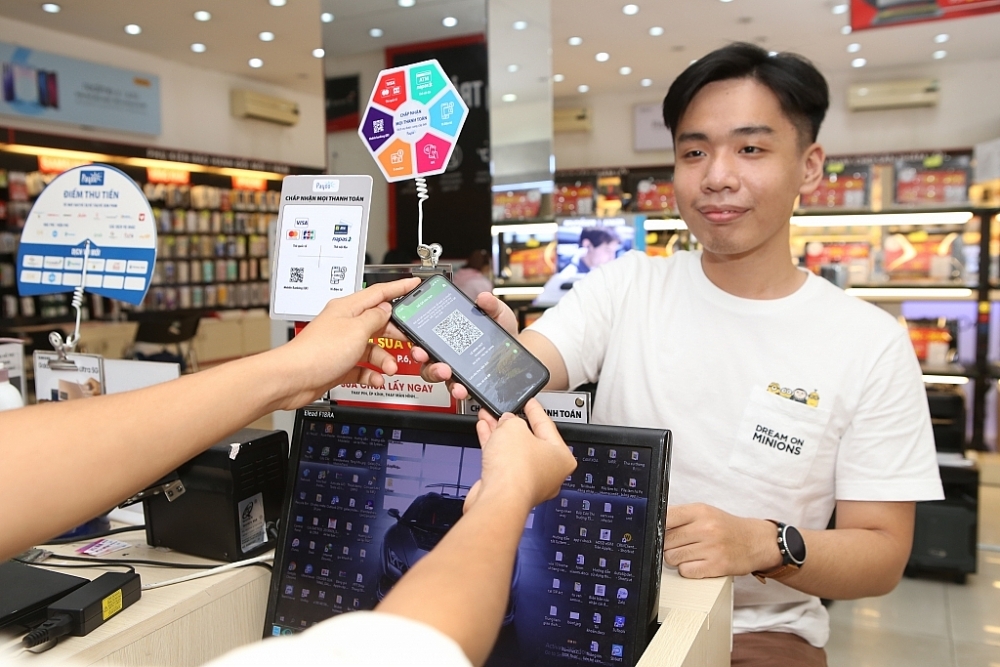Contrasting picture in a difficult economic context
The economy's deterioration is causing many businesses and consumers to fall into a state of "defence" and be careful about any market fluctuations. But besides that, there are still positive factors stimulating the market's flow.
 |
|
Spending on catering services still recorded good growth. Photo: TL |
Some people tighten their belts
Do not wait until the first quarter of this year; signs of a difficult economy began in the fourth quarter of 2022. In the plan 2023 shaped a few months ago, many leaders had to rewrite their business strategies, switching from "offensive" to "defensive" mode. Measures to lay off personnel, cut costs for resource-intensive activities such as R&D (research and development), suspend opening new points of sale or even cut losses to survive are decisive actions to "turn on safe mode", which has been applied by many businesses.
In defensive businesses, workers are also remarkably cautious in spending. The austerity sentiment made the general consumption situation negative in the first quarter. Especially in the retail sector, there is a change in consumer spending behaviour: cutting non-essential items and looking for similar options at lower prices on essential goods.
The group of non-essential goods and services is affected heavily above all others. Most of the stores in the group of phones and electronics decreased by 30-50% in revenue compared to the previous quarter. Many businesses in the information and communication technology (ICT) chain shared that the purchasing power of users this year was weaker than in the same period last year, although businesses continuously launched incentive programs. Instalment payment being the favourite payment method of users with the ICT group, also started to slow down from the third quarter of 2022, gradually decreasing from the fourth quarter of 2022 until now because financial costs were high and consumer demand for these goods dropped sharply.
Even essential goods and services are no exception. The decrease recorded through the Payoo platform is 5-10% of revenue for supermarkets, convenience stores and 10% for shopping centres - where many fashion and interior stores are placed.
Some people are still generous to spend
While most users are trying to keep their money tight, in some categories, purchasing power remains, even growing, creating market flows and making economic difficulties no more serious.
Food and Beverage (F&B) is one of the few sectors to maintain good growth. According to data from the Payoo payment platform, the food and beverage industry of mid-range restaurants and fast-food chains with a spending level of VND 150,000 - 300,000 per person has grown by 30% compared to the previous quarter. Particularly for milk tea and coffee, with an average price of VND 40,000 - 70,000 per piece, there was a slight increase of nearly 5% compared to the previous quarter.
Economic challenges may affect most consumers, but not all. In the general context of many difficulties, society always has those who are immune to the crisis because their assets and spending power are very large. That's why some spending on goods, services, and high-end jewellery has remained stable, even increased slightly, although many common items have decreased in purchasing power.
At the end of March, Golden Gate Trading and Service Joint Stock Company (Golden Gate) has just released its financial statements for 2022, recording a business year of record growth in both revenue and profit: net revenue reached VND 6,965 billion (equivalent to earning more than VND 19 billion per day), more than 2 times higher than in 2021. Revenue from selling food and beverages was VND 6,955 billion. Gross profit reached VND 4,314 billion, equivalent to an increase of 124%, the highest since 2014.
Statistics of the F&B industry in the Payoo payment platform fine-dining restaurants with a spending level of about VND 1 million /person per meal still have steady growth, even showing the attraction of customers more, although the average value of each order in this quarter increased by 7% compared to the previous quarter.
Besides, the group of jewellery and gemstone products also had an average increase of 10%. This is because the first quarter had many holidays, such as the occasion of Via Than Tai, February 14, and March 8, when well-off consumers opened their wallets comfortably for high-end jewellery.
Spending money aggressively while most others practice thrift; from an economic point of view, these "rich" people willing to spend are the factors that stimulate and maintain the market's circuit.
In that context, non-cash payment continues to grow strongly and becomes more and more popular in all shopping activities of people. Specifically, the value of QR payments via Payoo in the first quarter of 2023 was 2 times higher than in the same period last year. Moreover, QR codes cover from luxury restaurants to sidewalk eateries - something that was hard to imagine a few years ago.










